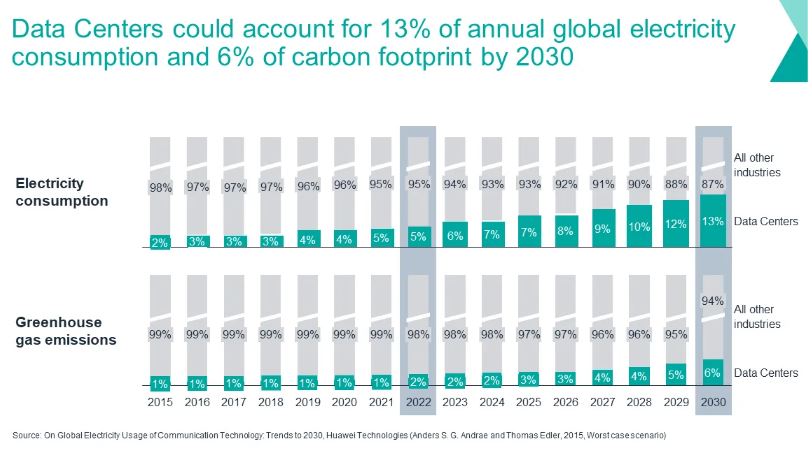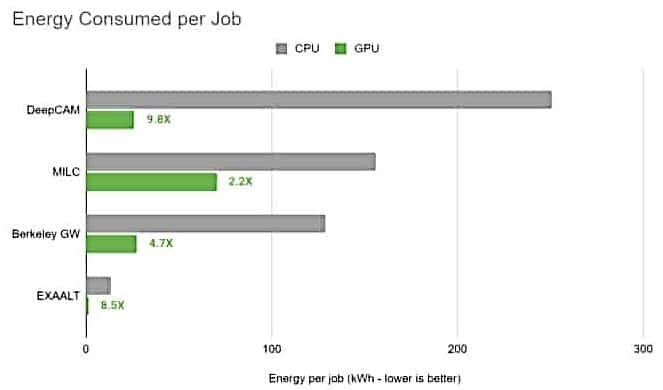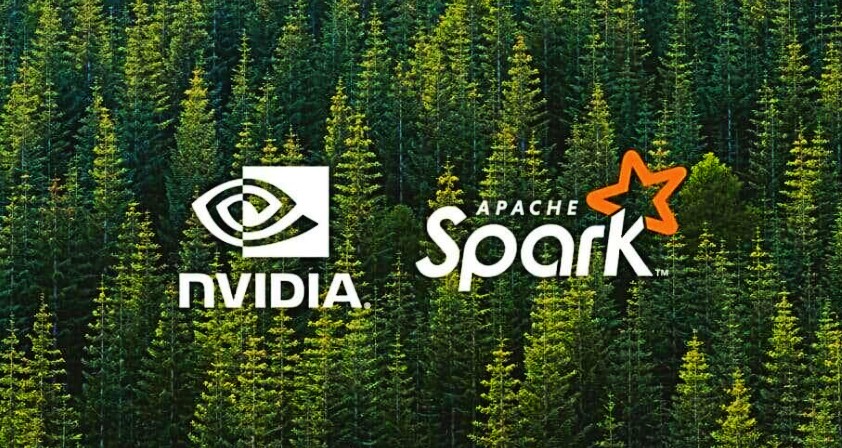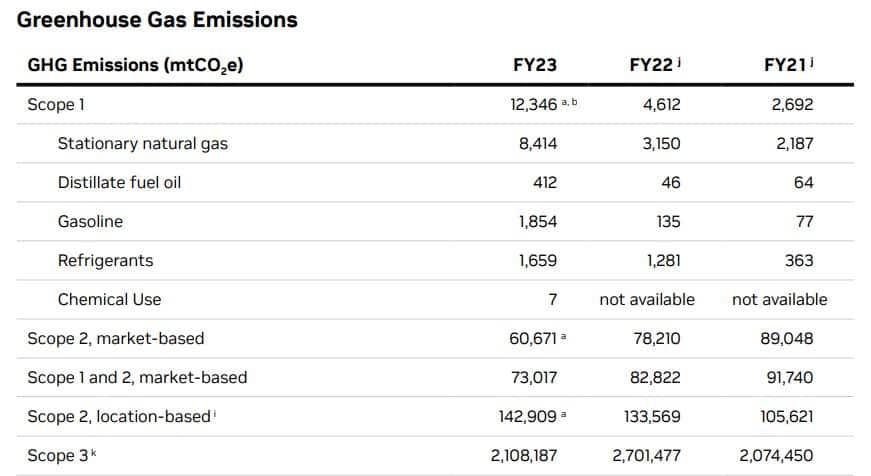Companies are unlocking the potential of green computing to enhance their profits and also contribute positively to the environment. The Nvidia RAPIDS Accelerator for Apache Spark is a game-changer by cutting both costs and carbon emissions by up to 80%.
Apache Spark is a software used by thousands of companies, including the world’s largest ones to speed up data analytics.
Nvidia RAPIDS Accelerator’s ability to both improve analytics performance and energy efficiency can help businesses meet their net zero emissions. This innovative solution holds the promise of substantial carbon reductions for corporations and enterprises using Apache Spark.
Increasing Speed, Reducing Costs and Emissions with Green Computing
Not only can the RAPIDS Accelerator cut a company’s carbon emissions by as much as 80%, but it can also deliver 5x faster and cost 4x less on a GPU-accelerated Apache Spark. That means 80% of Fortune 500 companies using Apache Spark can collectively reduce their emissions significantly.
According to its creator Nvidia, each Spark user adopting the accelerator software can reduce a total of 7.8 metric tons of CO2 a year. To put that into perspective, it’s the same as how much a car emits in burning 878 gallons of oil.
Thus, Nvidia’s RAPIDS Accelerator is a breakthrough in how green computing can help in the fight against climate change.
What is Green Computing?
Green computing is also called sustainable computing or green information technology (IT), spanning supply chains, from raw materials to recycling. It refers to the practice of maximizing energy efficiency while minimizing the environmental impact of computer chips, systems, and software.
In their lifecycle, green computing enables tasks through computers to be done for the least energy use possible. Efficiency is usually measured by performance per watt.
The energy efficiency of computers is crucial because the growing demand for electricity is one of the major culprits of global warming. Though data centers are responsible for only 1% or 200 terawatt-hours of electricity use each year, their growth demands attention.
In fact, industry estimates show that electricity use can go up to 13% by 2030 while the share of global carbon emissions would be 6% for the same year.

This is where green computers can offer a solution as “energy efficiency is a full-stack issue, from the software down to the chips”, says an Nvidia engineer. Indeed, innovations in green computing resonate at every level across the industry with Nvidia taking center stage.
-
Nvidia’s data centers themselves are responsible for 63% of the company’s energy use, according to its recent annual report (FY2023).
The company aims to reduce its own Scope 1 and 2 emissions in line with a 1.5C global temperature rise. For its Scope 3 emissions, Nvidia is engaging suppliers accounting for at least 67% of its supply chain emissions. The end goal is to influence them to also adopt science-based carbon reduction targets.
To address the growing emissions of its data centers, labs, and offices, as shown in the table above, Nvidia focuses on efficient operations and sourcing renewable energy. By getting its entire electricity supply from renewable sources, the company can reduce its Scope 2 market-based emissions by 100% by January 2025.
In its latest report, Nvidia managed to increase energy use from renewables by 44%, a 6% jump from previous year. As the IT expert continues to expand its operations, data centers emissions are also growing rapidly. The company will address this through the use of renewable energy, more efficiency, and its own accelerated green computing.
Green Computers for Net Zero
In a world where more than 70 countries strive to reach net zero emissions, green or accelerated computing emerges as a vital tool in this global challenge.
Major industry leaders like Nvidia are working with companies in various sectors to show the technology’s benefits and potential.
For example, the computer chip expert works with a renowned financial services company to test its application for real-time fraud protection. The financier aims to cut its carbon emission with accelerated computing so that it aligns with the Net-Zero Banking Alliance.
Moreover, Nvidia reported that a large AI supercomputer confirmed the energy efficiency of its green computing tech in May.
- Notably, across 4 popular applications, the Perlmutter supercomputer at the National Energy Research Scientific Computing Center (NERSC) demonstrated remarkable energy efficiency gains of 5x on average with Nvidia A100 Tensor Core GPUs.

In fact, a weather forecasting application recorded acceleration of almost 10x compared to regular CPUs. These results are proof that green or accelerated computing is powerful in diverse applications.
Remarkable Testimonies for Accelerated Computing
Other notable testaments of the Nvidia RAPIDS Accelerator came from Adobe, IRS, and AT&T. They all have tested and harnessed the powerful ability and potential of this green computing and information technology. They have experienced accelerated speeds, cost reduction, and remarkable AI model training gains.
For instance, AT&T was able to process 2.8 trillion rows of mobile data information for only 5 hours – over 3x faster at 60% reduced cost than any previous test.
According to the company’s AI architect, it would take over 48 hours to process only 7 days of data on CPU clusters. Compared that to the 5-hour result for Nvidia’s accelerator which involved a month’s worth of data.
So the AI expert suggested that:
“… if a job is taking too long and you have a lot of data, turn on GPUs — with Spark, the same code that runs on CPUs runs on GPUs.”
Adobe also tried Nvidia’s green computing tech on its Intelligent Services platform, a tool helping marketers speed analytics using AI. They discovered that a single Nvidia GPU node can beat a 16-node CPU cluster by 33% while decreasing computing costs by 70% with the help of RAPIDS Accelerator.
Adobe’s engineers also found out that the same green computing trained an AI model 7x faster than running on CPUs. That represents a 90% cost reduction in training AI models.
To validate the gains of Nvidia’s sustainable computing, the IRS reported a 20x speed improvement by using GPU-powered computers. And that’s half the cost of doing it on CPUs.
The IRS test analyzed over a 3 terabyte dataset, which the accelerated Spark cluster successfully processed.
Nvidia further eases adoption by offering an accelerated Spark analysis tool, allowing users to explore the benefits without code changes and tailor GPU acceleration to their specific workloads.
As companies tread the path towards sustainability, the fusion of accelerated green computing and initiatives for climate becomes a crucial force. By integrating sustainable technology, like Nvidia’s RAPIDS Accelerator, into their operations, companies can drive profitability, speed up processes, and reduce carbon emissions, contributing to a greener future.



